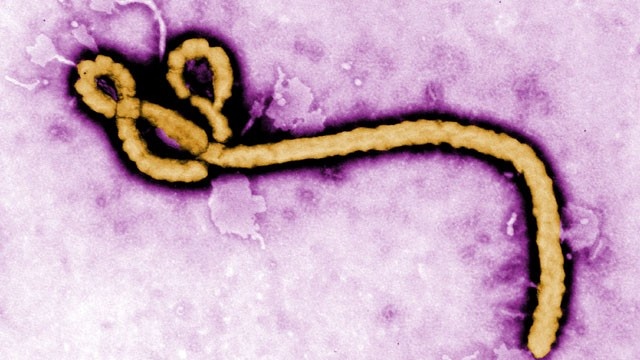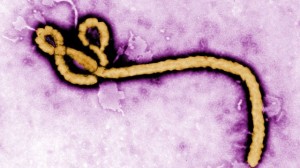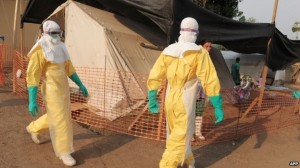July 28, 2014 – The outbreak of Ebola in West Africa has implications for world health that cannot be ignored. The disease has killed more than 660 and infected almost 1,100 in four countries since March of this year and new cases are cropping up every day.
Ebola (seen above) is a different kind of viral infectious disease. It is severe and often fatal. It kills quickly. The incubation period is anywhere from two to 21 days. It appears to be transmitted by direct physical contact with the body fluids of an infected person. And it can stay alive in a dead person for several days so even handling a corpse in preparation for burial can lead to disease transmission. Handling the soiled bedding, the bed pans, syringes, anything and everything in contact with the patient could mean you get the disease.
Its spread is preventable when the medical response to it follows a protocol of isolation. Those exposed to an Ebola patient before diagnosis need to be quarantined.
Because Ebola symptoms resemble at the beginning those of more common diseases, like influenza, medical teams can easily be fooled. But after early onset symptoms pass there is no doubt in the minds of those who witness the onset of Ebola – a rash, bleeding from body openings, severe pain, diarrhea, vomiting, fever and more.
For West Africa this latest Ebola outbreak is the worst in history. First discovered in Guinea, it has spread to Sierra Leone, Liberia and now Nigeria, the latter because a passenger on an airline with flu-like symptoms, now known to have contracted Ebola, landed in Lagos, Africa’s largest city, home to 21 million. Who knows how many people were in contact with him in the passenger terminals both in departure and arrival? And who knows how many passengers on the airplane contacted others after they landed? That Nigerian-bound passenger is now dead, the first example of the virus ever being transmitted by airplane to another location.
This is the stuff of pandemics. Nigeria is home to 170 million. It is the most populated country on the continent. The Nigerian government has declared a national emergency. It has put all of its ports of entry on red alert. It is tracking down every passenger who was in contact with the Ebola victim. The Nigeria Centre for Disease Control has established Ebola emergency operations facilities in anticipation of new cases.
Why have so many contracted Ebola virus? There is a clash of cultures going on in West Africa, modern medicine versus traditional healing. Some of those who have died were spirited away by family and friends who believe that the cause of the disease is those wearing the bio-hazard suits, the medical doctors and nursing teams (see picture below) trying to treat the victims.
Medecins sans Frontieres, in English, Doctors without Borders, an organization desperately attempting to halt the disease spread, is the object of fear by many in the local population. The doctors have seen patients taken away by family to be treated by traditional healers in local villages. These patients have died and who knows how many they have been in contact in their local communities to further spread the disease.
This isn’t the movie Outbreak. In that film the American government had a vaccine to end the threat. But with Ebola, “There is no treatment and no vaccine. The priority is to isolate suspected cases.” So says Medecins Sans Frontieres.
But if there is a sliver of hope in this ongoing story, it is this. Ebola used to kill everyone who contracted it. Then as isolation protocols and symptomatic treatment plans were attempted the death toll declined to 90%. So far, in the current epidemic, 80% of the victims have died. This is at best Pyrrhic progress.






















